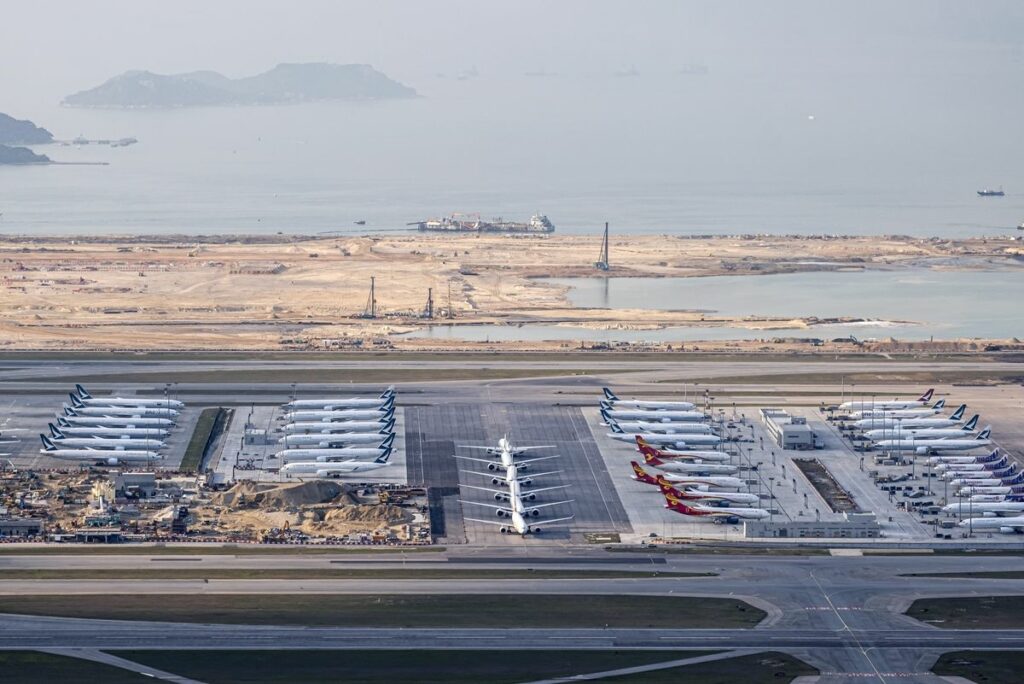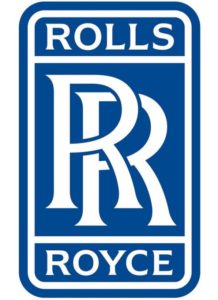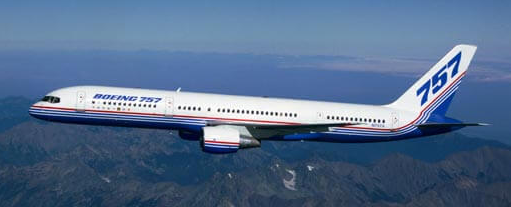Leeham News and Analysis
There's more to real news than a news release.
Is the Redhawk Development process the future at Boeing?
Subscription Required
By the Leeham News Team

Boeing wants to converge advanced design and production processes from across the 7-Series platforms and the Defense unit into one commercial airplane–its Next Boeing Airplane, or NBA. Photo: Boeing.
July 12, 2021, © Leeham News: It may be an overstatement to say that Boeing CEO David Calhoun will be the future of Boeing Commercial Airplanes on a radical production makeover.
But it’s not an understatement to say that the production moonshot contemplated is critical to BCA.
However, advanced production processes are only part of the challenge facing Boeing. A radical shift in employee culture is also required for success.
Boeing Defense, Space & Security (BDS) is doing good things with respect to the T-7 Redhawk Trainer Integration. BDS slid the first fuselage together in 30 minutes. But the question before us is this. Is this 30 minute join process a revolutionary process change that Boeing can scale for transport category aircraft, or a byproduct of Great Hardware Variability Control in a simple non-variable end item. Fighter-sized aircraft are simple to build. Highly variable Commercial aircraft are another story completely.
Calhoun, and before him CEOs Dennis Muilenburg and Jim McNerney, would lead you to believe that some new magic occurred in the digital design and that this new magic will transfer to the next Boeing airliner and new engines are not necessary. That’s a bold position to take, so let’s look at what might be involved behind his thinking.
Asia-Pacific airline recovery held back by slow vaccination, border closures
Subscription Required
By Judson Rollins
Introduction
July 5, 2021, © Leeham News: The passenger air travel recovery from COVID-19 has been wildly uneven, even between neighboring countries. Most countries with large domestic markets have seen dramatic rebounds in passenger volumes, although yields have been held back by a continued slump in long-haul and business travel.

Aircraft parked at Hong Kong International Airport, with construction on a third runway in the background. Source: Bloomberg.
In the Asia-Pacific region, however, even short-haul international traffic has been disrupted by virus outbreaks, a painfully slow vaccine rollout, and a largely stagnant web of border closures.
Summary
- Much of Asia is well behind global average in the vaccine rollout.
- Domestic markets in China, Australia, and New Zealand are performing strongly.
- Border closures continue to cripple international travel.
- Many Asian countries are likely to stay closed well into 2022.
- Most Asian airlines are reporting slow progress toward capacity restoration.
China distorts progress in Boeing 737 MAX return to service
Subscription Required
By Scott Hamilton
Introduction
June 28, 2021, © Leeham News: There are now 265 Boeing 737 MAXes in airline service, according to data reviewed by LNA.
There are 263 MAXes in storage that appear to be previously delivered airplanes. This number is artificially inflated by the 95 MAXes that are grounded in China. China’s regulator hasn’t recertified the MAX, a move widely considered political due to the long-running trade war between the US and China initiated by the Trump Administration.
When the MAX was grounded in March 2019, there were 387 in service. The math indicates 147 MAXes were delivered from inventory or new production since the airplane was recertified by the Federal Aviation Administration in November 2020 and other regulators shortly afterward.
There were 400 MAXes in inventory at the end of the first quarter, down from 425 at the end of the year. Boeing resumed production in the single digits. Boeing does not reveal its rate, but it is believed to be about 10-14/mo going to 16/mo in the third quarter.
In contrast, there are 106 A320neos and 38 A321neos in storage as of last Friday.
Europe’s airline recovery: a tale of two continents
Subscription Required
By Judson Rollins
Introduction
June 24, 2021, © Leeham News: The recovery in passenger air travel from COVID-19 has been wildly uneven. A dramatic recovery in passenger volume – although not yield – in many domestic markets has been offset by a continuing sharp slump in international traffic.
The latter has proven particularly crippling to European airlines, most of which have miniscule domestic markets. Intra-EU travel, although generally permitted by member countries, has been slow to recover as business travelers have failed to return in meaningful numbers.
Meanwhile, long-haul travel remains hampered, most recently by an ever-changing landscape of “red zone,” “orange zone,” and “green zone” labels, plus other restrictions placed on arriving travelers.
The bright spot is strong leisure travel demand, which is propelling the continent’s low-cost carriers much closer to recovery than their legacy counterparts. This LCC-versus-legacy split brings into sharp relief the state of European airline traffic.
Summary
- Vaccine rollout ahead of many developed markets; certificate program launching next week.
- Legacy carrier recovery is dragging out, weighed down by business and long-haul travel woes.
- LCCs performing relatively well, with some on track to fully recover next year.
- Train service unlikely to displace airline demand.
The Ultrafan Project
Subscription Required
By Vincent Valery
Introduction
June 21, 2021, © Leeham News: Rolls-Royce launched the Ultrafan in 2014, a project to develop next-generation geared turbofan engines. The engine OEM has been working on that project ever since.
The Ultrafan demonstrator started the final assembly this year at the OEM’s Derby facility, with a plan to start and complete ground testing in 2022. Rolls-Royce will await a new OEM program launch to finalize the development to a production engine after 2022.
While using a power gearbox has gathered most of the attention, the Ultrafan uses other new technologies to enable a leap in fuel efficiency. LNA analyzes the technologies used and what lies ahead for the program.
Summary
- An evolving rationale for the Ultrafan business case;
- Much more than the addition of a power gearbox;
- A break with the Trent design
- A significant infrastructure uplift;
- Awaiting the next OEM move.
Freighter conversion will absorb some excess widebody supply – but not all
Subscription Required
By Judson Rollins
Introduction
June 17, 2021, © Leeham News: A key question hanging over the used widebody market is what percentage of available aircraft could be converted into freighters.
Indeed, existing passenger-to-freighter (P2F) conversion providers are ramping up capacity and new ones are coming online. However, much of the P2F capacity growth is focused on converting used 737s and A320-family aircraft.
Airbus and Boeing foresee a market for 1,500-1,600 conversions over the next 20 years. While Boeing doesn’t break out its forecast between single-aisle and widebody aircraft, Airbus believes 670 of these will be widebodies.
In this analysis, LNA explores the size of the market, key providers, conversion capacity, and likely buyers of converted aircraft.
Summary
- Nearly 2,000 widebodies are in storage or coming off lease by 2030.
- New-build freighters will go to more established operators, while P2Fs are preferred by operators wishing to minimize capital costs.
- At current production rates, up to 400 widebodies could be converted by 2030.
- Early-production 787s, A350s are less likely to be converted.
Cheap aluminum widebodies may finally enable long-haul LCC profitability
Subscription Required
By Judson Rollins
Introduction
June 10, 2021, © Leeham News: Residual values and lease rates have plummeted to record lows for previous-generation widebodies like the A330, 767, and 777. Inventories continue to build around the world, and prices appear set to fall even further.
At the same time, business travel ground to a near-halt in most regions. Even in countries where domestic leisure travel rebounded, like the US or China, average fares are down 20%-40%.
Southwest Airlines describes itself as a “low-fare carrier.” With business and premium-cabin traffic expected to take 3-4 years to return and be permanently impaired to some extent, every airline may be a low-fare carrier for years to come.
With higher-density seat configurations, more flexible scheduling – and, most importantly, the lower capital costs of used aircraft – new low-cost carriers (LCCs) could break even on long-haul routes with materially lower revenue than their predecessors.
This confluence of events has created a once-in-a-generation, perhaps once-in-a-lifetime, opportunity for new airlines to achieve a sustainable cost advantage over legacy carriers weighed down by capital-intensive aircraft, expensive crew contracts, and record-high debt service costs.
Summary
- Previous long-haul LCC startups failed due to insufficient capital, overextended operations, fares too low to cover costs.
- Ultra-low lease rates make used A330s cheaper to fly than new-technology aircraft.
- Lower costs, surgical route selection level the long-haul playing field.
- Legacy hub-and-spoke model will be weakened by “overflight” routes.
- Low capital costs mean used airplanes need only be flown when demand warrants.
The impact of higher inflation on OEMs and Airlines
Subscription Required
By Vincent Valery
Introduction
June 7, 2021, © Leeham News: As the world economy recovers from its sharpest shock since World War II, an unwelcome side effect started appearing: higher inflation rates.

One Hundred Trillion Zimbabwean Dollars Note, issued during a period of hyperinflation in the country
The Consumer Price Index (CPI) in the USA increased by 4.2% year-over-year in April 2021. The leading causes of the increase are higher commodity prices and worker and material shortages in the US economy.
Aside from temporary commodity-induced spikes, inflation rates have stayed moderate over the last 30 years. However, numerous countries (including the USA and Europe) experienced persistently high inflation rates throughout the 1970s and early 1980s.
It is premature to say whether the latest spike is temporary or will persist. Should the latter happen, it would have profound consequences for the commercial aviation ecosystem. LNA analyzes the potential implications for OEMs, airlines, and lessors of such a scenario.
Summary
- Inflation 101;
- Winners and losers in high inflation environments;
- Consequences for OEMs;
- Impact on airlines and lessors.
Widebody availability set to surge; could new entrants take advantage?
Subscription Required
By Judson Rollins
Introduction
June 3, 2021, © Leeham News: Lessors are expected to write down the value of their widebodies as the long-haul travel slump appears set to extend well beyond this year, LNA reported last week.
A tidal wave of excess widebodies has reduced ownership costs to historic lows. Prices will only go lower as lessors finally initiate distressed-asset sales, and lease rates will continue to fall as used widebody inventory grows.
A confluence of factors, topped by the availability of lower-cost used widebodies, could increase the cost advantage of low-cost carriers over legacy competitors – at the same time reduced business travel and lower yields reduce the gap between legacy and LCC unit revenue.
Summary
- Widebody availability is set to increase steadily throughout the decade.
- What airplanes are likely to be most attractive?
- Sustainably lower costs could enable low-cost carriers to overcome a shrunken “revenue gap.”





